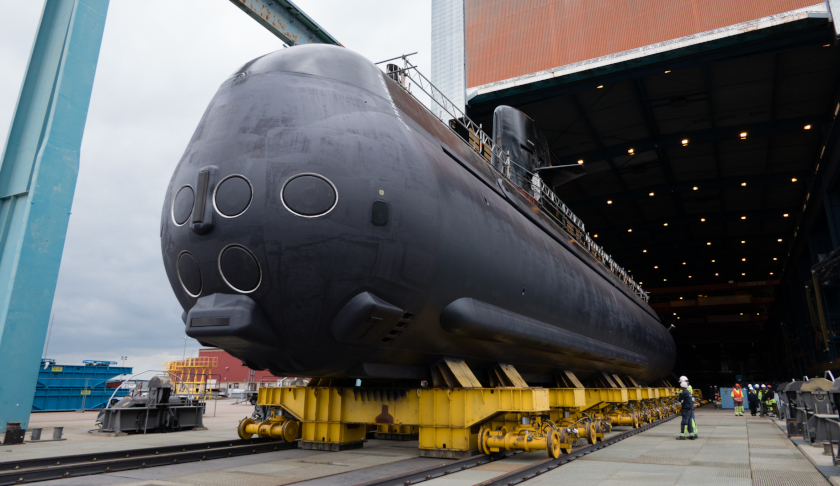Saab has successfully relaunched HSwMS Uppland bringing the number of the successfully upgraded Gotland Class submarines to two and setting a model for Australia to follow with the expected mid-life upgrades (MLU) for the Collins Class.
To continue reading the rest of this article, please log in.
Create free account to get unlimited news articles and more!
The relaunch of a second air independent propulsion (AIP) submarine within 12 months illustrates the skills and capacity of a world-class shipyard. Saab is one of few companies in the world capable of running mid-life upgrades while in parallel developing the next generation of AIP submarines. Saab’s modular philosophy provides the customer with a fleet of submarines that – at any time and cost effectively – can be fully upgraded in order to meet the latest challenges.
Submarines are designed to operate in challenging environments. The hull must withstand decades of operation, while systems and technologies onboard require upgrades on a shorter period to be operationally relevant. By cutting the hull in two, and replacing many of the vital systems, Saab can in a cost efficient way and short timeframe, provide AIP submarines ready for tomorrow's challenges.
Gunnar Wieslander, Senior Vice President, head of Saab business area Kockums explained, "Few shipyards around the world have the experience of completely modifying a submarine, creating almost a new ship. We are the only one having completed it twice within 12 months, first with [HSwMS] Gotland and now [HSwMS] Uppland.
"If you take into account that smartphones did not even exist when these vessels were launched at the end of the 1990s, you begin to grasp the huge leap submarine technology has taken during this period and how significant this mid-life upgrade is."
The updated version of Uppland and her sister ship Gotland are paving the way for the most modern AIP submarine under production today: the Blekinge Class (A26). More than 20 new systems on-board the new Gotland Class will be implemented in the the state-of-the-art A26, which contributes to their de-risking for the A26. This also gives great training opportunities for the crew when they in the future deploy onboard the A26.
HMS Uppland was designed and built by Kockums in Malmö in the early 1990s and commissioned in 1997. The mid-life upgrade consists of modifications, replacement and upgrades of on-board systems and technologies, sustaining the submarine's operability and ensuring service to Sweden for many years to come.
The upgrade process entails many important systems, such as the Stirling AIP, a complete new mast suite, sonars and sensors as well as management and communication systems.
Growing concerns about the delivery time frame and capability of Australia's future submarine fleet, combined with the ageing and diminishing capability of the Navy's Collins Class submarines, has served to highlight the need to provide a credible stop-gap measure to resolve any real or perceived tactical and strategic shortfalls in the nation's existing and future submarines.
Australia's Collins Class submarines are based upon enlarged Vastergotland Class submarines, designed by Kockums, which served as the basis for the Gotland Class submarines. The Swedish Navy currently operates both classes of submarines following a series of mid-life upgrades aimed at improving the capability of the platforms.
The MLU program for the Gotland Class highlights that modernisation and upgrade programs can extend the operational life and deterrence capability of platforms like the Collins Class.
Stephen Kuper
Steve has an extensive career across government, defence industry and advocacy, having previously worked for cabinet ministers at both Federal and State levels.

 Login
Login








